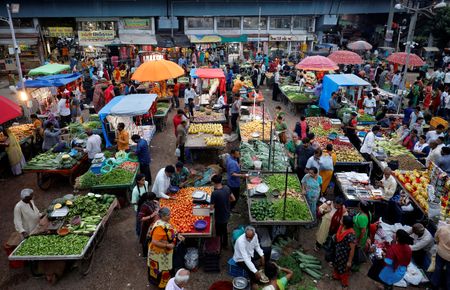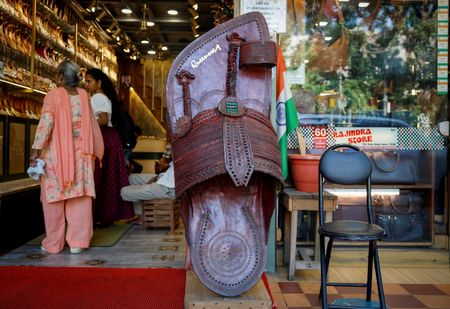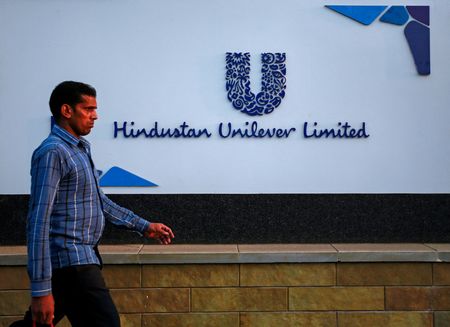By Ira Dugal and Swati Bhat
MUMBAI (Reuters) – India’s monetary policy committee’s (MPC) decision to reinforce the 4% retail inflation target follows inflation returning to its 2%-6% comfort zone, but does not necessarily signal rates will remain higher for longer, two external members of the committee told Reuters.
India’s inflation breached the rate-setting panel’s 6% upper tolerance limit in five of the last 12 months, but stayed between 4% and 6% in the other seven, including easing to 5% in September after two months of food cost-driven spikes.
“A few quarters back, the urgent task before the MPC was to bring inflation inside the tolerance band.
That phase is now behind us apart from a few transient spikes above the band,” panel member Jayanth Varma told Reuters by email late on Friday.
“The focus, therefore, naturally shifts to the next stage of bringing the inflation to the target level,” said Varma, adding that there is no ambiguity in the eventual inflation goal of 4%.
The six-member rate-setting panel, which includes three external members, kept interest rates unchanged this month but signalled it would focus on a 4% inflation target, raising expectations rates could stay elevated for a while in Asia’s third-largest economy.
However, that focus does not necessarily suggest that rates will stay higher for longer as decisions will be data-dependent, panel member Ashima Goyal told Reuters via email.
“So far, despite repeated supply shocks core inflation is softening towards 4%.”
Varma said a real interest rate — derived by adjusting the policy rate for inflation — of around 1% will drive inflation sustainably down to the target.
“As projected inflation declines, the nominal repo rate consistent with the 1% real rate will also decline,” said Varma.
“Everything therefore depends on how the projection for inflation 3-4 quarters ahead evolves in the coming quarters.”
The MPC’s “patience in gliding inflation” towards the target “is driven primarily by concerns about growth fragility,” Varma said.
DECLINING HOUSEHOLD SAVINGS
Data released by the central bank last month showed that net financial savings in Indian households fell to a 50-year low of 5.1% of GDP as leverage rose.
In the minutes of the MPC’s meeting, Goyal suggested considering measures such as higher capital requirements for fast-growing loan categories “to restrain over-enthusiasm in good times and thus avoid a crash.”
Household leverage is relatively low in India and has to rise “but not too fast”, Goyal told Reuters.
“Countercyclical prudential policy supports financial stability and, therefore, growth, while leaving the interest rate free to suit domestic inflation and growth requirements.”
Varma said, in the MPC minutes, households’ willingness to take on debt may support near-term consumption and growth.
“I think the task for policymakers is to ensure that economic growth is robust enough so that this borrowing can be repaid from rising incomes,” Varma told Reuters.
“If growth does not materialize, then of course this debt would become a burden a couple of years down the road.”
(Reporting by Ira Dugal and Swati Bhat; Editing by Mrigank Dhaniwala)










